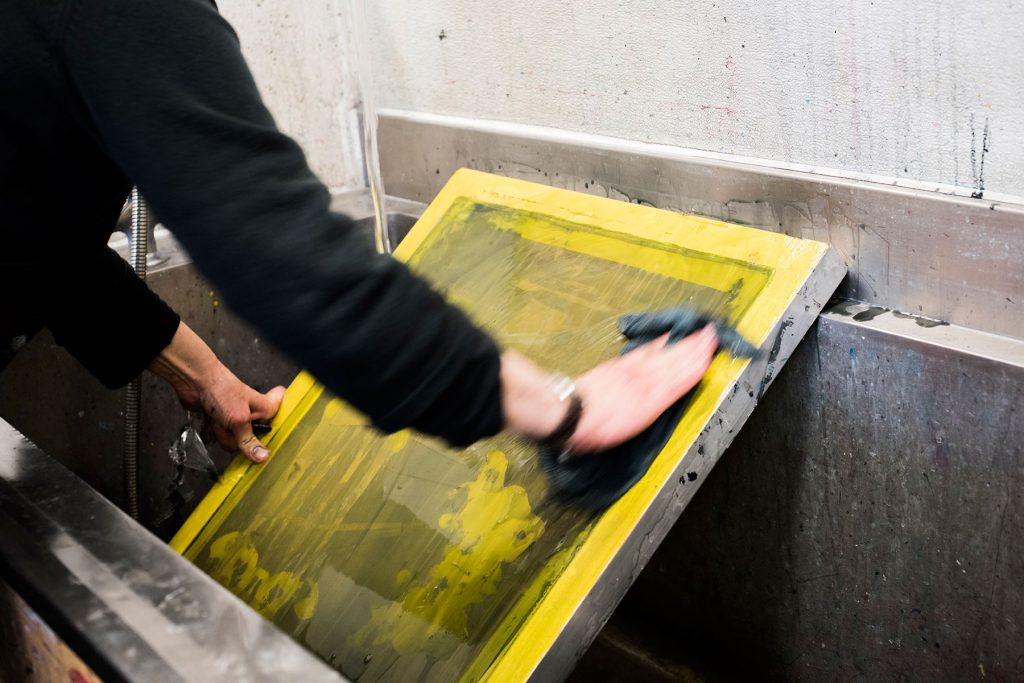Screen printing is about to be restored to NSCAD University’s famed printmaking department, thanks to a $100,000 donation from The Harrison McCain Foundation.
“We’re delighted, especially because of the interdisciplinary instructional possibilities,” says Mark Bovey, associate professor in the Division of Fine Arts. “This will enhance learning resources relevant to printmaking as well as other media taught at the university.”
NSCAD’s printmaking studios are renowned for teaching students such traditional processes, as intaglio, lithography and relief printing. However, screen printing has not been a core part of the curriculum since 1982. At the time, screen printing was considered one of the most hazardous processes in the arts; materials were toxic and solvent-based. And so, when the professor who taught screen printing retired, screen printing retired with him.
But screen printing is no longer the toxic process it once was. With the use of water-based and ultra-violet inks, screen printing is much safer to learn and use.
“And now it’s one of the cleanest processes,” says Ericka Walker, assistant professor and a printmaker herself.
The funding will be used to outfit a new studio—the location on Granville Campus is to be determined—with specialized equipment such as vacuum tables, proofing tables, screens, storage racks, drying racks, a stainless steel wash-out booth for cleaning screens. Also required is an ultraviolet dryer unit, which dries the ink on paper and filters the ozone that’s created in the process.
New screen printing facilities will also be able to make use of a recently acquired light exposure unit, located in the printmaking darkroom.
“We are so grateful to The Harrison McCain Foundation for the chance to build on NSCAD’s printmaking tradition and excellence,” says David B. Smith, President of NSCAD University.
“The foundation’s generosity allows us to respond to an expressed student desire to learn screen printing. This kind of support means so much to a small university like NSCAD with its limited resources.”
The creation of a screen printing studio will be able to accommodate up to 100 students a year with the establishment of new introductory and intermediate screen-printing classes. It is also expected students of other departments, visiting artists and professional artists in the community will be able to use the facilities outside of class time. Screen printing has applications in many other art-making disciplines such as painting, design, textiles and ceramics.
It is anticipated the new classes will begin in the 2012-2013 academic year.

